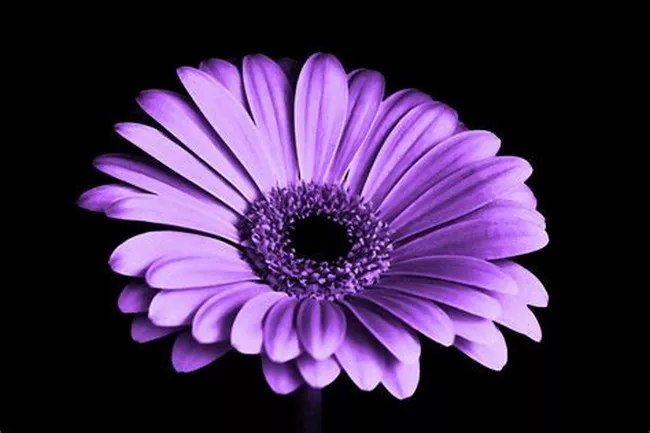Purple flowers are admired for their stunning hues, often associated with royalty, mystery, and elegance. They can be found in gardens, wild landscapes, and floral arrangements worldwide. The question “What is the purple flower called?” opens a vast world of botanical diversity. In this article, we will explore various purple flowers, their characteristics, and where they are commonly found.
The Significance of Purple Flowers
Purple flowers are cherished not just for their beauty but also for their symbolic meanings. In many cultures, purple is associated with nobility, luxury, and spirituality. These flowers often convey messages of admiration, pride, and dignity when given as gifts. They can also symbolize creativity, peace, and calmness, making them popular choices for gardens and floral arrangements.
Popular Purple Flowers
There are numerous purple flowers, each with unique traits and growing conditions. Here, we will discuss some of the most well-known purple flowers:
Lavender (Lavandula)
Lavender is perhaps the most famous purple flower. Known for its aromatic fragrance, lavender is widely used in perfumes, essential oils, and culinary dishes. The flower spikes of lavender plants are typically a vibrant purple and bloom in the summer. Lavender is native to the Mediterranean region but is now grown worldwide. It thrives in well-drained soil and requires full sun to bloom optimally.
Wisteria
Wisteria is a climbing vine known for its long clusters of bluish-purple flowers that hang down in grape-like bunches. This plant is native to Asia and North America and can grow quite large, often covering pergolas, walls, and even large trees. Wisteria is famous for its fragrant blooms that appear in the spring. It requires plenty of sunlight and a sturdy support structure due to its vigorous growth.
Lilac (Syringa)
Lilacs are popular garden shrubs known for their delightful fragrance and clusters of small purple flowers. These shrubs bloom in late spring and are native to Eastern Europe and Asia. Lilacs prefer well-drained soil and a sunny location to thrive. They are relatively low-maintenance, making them a favorite among gardeners.
Iris
The iris is a striking flower that comes in various colors, including several shades of purple. Named after the Greek goddess of the rainbow, irises are known for their intricate blooms and sword-like leaves. They are commonly found in gardens and along water bodies. Irises prefer well-drained soil and can thrive in full sun to partial shade.
Violet (Viola)
Violets are small, delicate flowers that come in various shades of purple. These flowers are known for their heart-shaped leaves and sweet scent. Violets are often found in woodland areas and gardens. They are low-growing plants that can spread quickly, making them an excellent ground cover. Violets prefer moist, well-drained soil and partial shade.
Unique Purple Flowers
Beyond the commonly known purple flowers, there are several unique varieties worth mentioning:
Allium
Alliums are ornamental onions known for their spherical clusters of tiny purple flowers. These globe-like blooms appear in late spring to early summer and can add a whimsical touch to any garden. Alliums are hardy plants that prefer well-drained soil and full sun. They are also deer-resistant, making them a good choice for areas with wildlife.
Clematis
Clematis is a versatile climbing vine that produces large, star-shaped purple flowers. This plant is popular in gardens for its ability to cover fences, trellises, and walls. Clematis blooms from spring to fall, depending on the variety. It prefers well-drained soil and a sunny location with some afternoon shade.
Petunia
Petunias are popular annual flowers that come in various colors, including vibrant purples. These flowers are often used in hanging baskets, window boxes, and garden beds. Petunias bloom profusely throughout the summer and into fall, provided they receive full sun and regular watering. They are relatively low-maintenance and can add a splash of color to any garden.
See Also: 25 Purple Flowers to Brighten Your Garden
Growing Conditions for Purple Flowers
While purple flowers can vary significantly in appearance and size, many share similar growing conditions. Most purple flowers prefer:
Well-drained soil: Proper drainage is crucial to prevent root rot and ensure healthy growth.
Sunlight: Many purple flowers thrive in full sun, although some varieties can tolerate partial shade.
Watering: Consistent watering is essential, especially during the growing season. However, it is important to avoid overwatering, as this can lead to fungal diseases.
Fertilization: A balanced fertilizer can help promote healthy blooms and foliage. It’s best to follow the specific needs of each plant type.
Common Pests and Diseases
Purple flowers, like all plants, can be susceptible to pests and diseases. Common issues include:
Aphids: These small insects can suck the sap from plants, causing leaves to curl and yellow. They can be managed with insecticidal soap or neem oil.
Powdery mildew: This fungal disease appears as a white powder on the leaves and stems. Proper spacing and good air circulation can help prevent powdery mildew.
Root rot: Caused by overwatering or poorly drained soil, root rot can cause plants to wilt and die. Ensuring proper drainage and avoiding excessive watering can prevent this issue.
Conclusion
Purple flowers add a touch of elegance and mystery to any garden or floral arrangement. With their diverse range of shapes, sizes, and shades, there is a purple flower for every taste and garden style. From the aromatic lavender to the delicate violet, these flowers are cherished for their beauty and symbolic meanings. Understanding the growing conditions and care requirements of these flowers can help gardeners cultivate a vibrant and healthy garden. Whether you are an experienced gardener or a novice, purple flowers can provide a stunning addition to your garden landscape.


